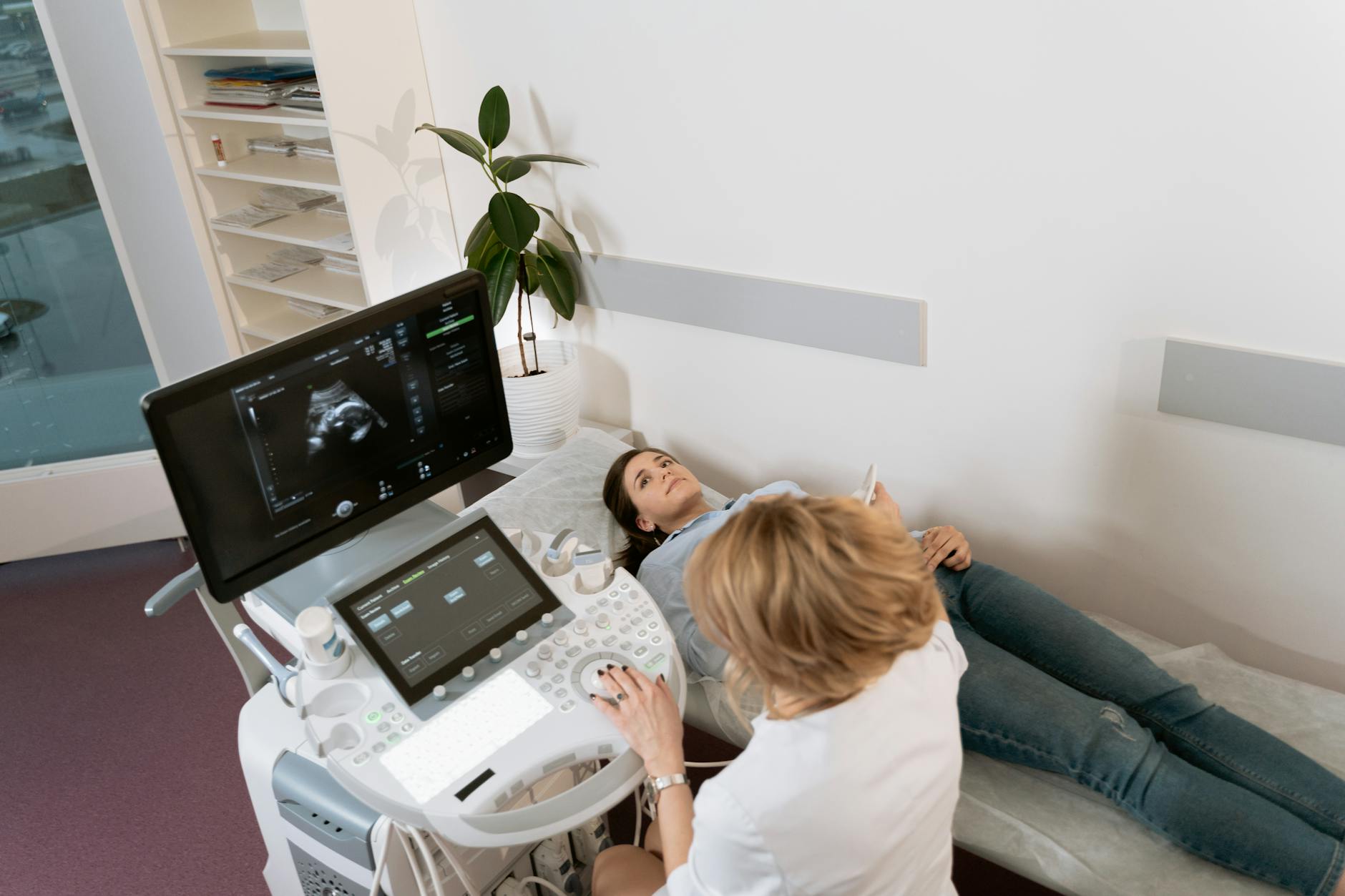Is Australia's Telehealth System Ready for the Future?

Current State of Telehealth
Adoption in Rural Communities
In Australia's remote areas, telehealth has become a vital lifeline for patients who previously had limited access to healthcare services. Telehealth has been particularly beneficial for rural communities like Esperance, where geographical barriers make healthcare accessibility challenging. Through substantial uptake, gp after hours access has drastically improved, allowing continuous patient care without the need for long-distance travel.
Integration with Traditional Healthcare
The integration of telehealth with traditional healthcare systems in Australia has evolved to create a cohesive care environment. Practitioners are finding innovative ways to blend in-person consultations with virtual check-ups, providing greater flexibility for both patients and healthcare providers. For instance, the synergy between telehealth consultations and in-clinic visits enables a hybrid approach that enhances overall patient outcomes.
Technology Infrastructure
While Australia's telehealth infrastructure is developing, the disparity between urban and rural regions remains a significant hurdle. The tech hubs in Docklands offer a blueprint for what could be achieved nationwide, with cutting-edge solutions that could address current gaps. However, the rollout of these technologies in rural areas still encounters issues, such as inconsistent internet connectivity and limited access to modern equipment, which can impede the effective utilisation of telehealth medicare services.
By leveraging experiences from innovation centers at Melbourne CBD, rural healthcare could potentially enhance its technological capabilities. With an emphasis on reliable infrastructure, the future of telehealth in rural Australia holds promise for improved patient access and satisfaction.
Challenges Facing Telehealth
Connectivity Issues
In rural areas, connectivity remains a daunting challenge for telehealth services, inhibiting seamless interactions between healthcare providers and patients. This is particularly pertinent for GPs conducting gp home visit perth services, where stable internet is a necessity for efficiency. Without reliable network infrastructure, the effectiveness of consultations can be compromised. I have been through this first-hand, and it's apparent that a stable connection is critical to the success of medicare telehealth services. Poor connectivity not only impacts the video and audio quality of consultations but can also lead to increased frustrations among both patients and providers.
Patient Technology Literacy
Patient technology literacy is another significant barrier. In my experience as a digital innovator in Docklands, Melbourne, I've found it essential to tailor guidance for different patient demographics. Older populations, in particular, might struggle with digital interfaces, requiring more straightforward and intuitive solutions. Providing comprehensive guides or tutorials can assist in enhancing their tech literacy, ensuring they can efficiently navigate telehealth platforms.
Data Security Concerns
Security is paramount, especially in healthcare, where data breaches can have catastrophic implications. During networking events at the Melbourne Convention and Exhibition Centre, I've often encountered robust discussions on how telehealth can safeguard sensitive patient information. Implementing encryption and other advanced security measures is crucial in mitigating risks. As tech professionals continue to innovate in the healthcare space, ensuring robust cybersecurity protocols will be a key focus to maintain trust and integrity in telehealth solutions.
Future Developments
Advancements in Technology
As we push the boundaries of telehealth services beyond traditional frameworks, the innovations springing from Australia's tech hubs, such as those in Docklands, are set to revolutionise patient interactions. Innovations like AI-driven diagnostics and wearable health monitors are enhancing the precision and immediacy of healthcare solutions. For instance, with a robust telehealth platform, patients in even the most secluded regions can now access expert consultations from an after hours clinic, thereby reducing the need for urgent late-night transfers.
Policy and Regulation Changes
Upcoming shifts in policy will further stabilise the telehealth landscape in Australia. Emphasising the importance of a cohesive regulatory framework, these updates are expected to bolster the delivery of telehealth by integrating it seamlessly with existing Medicare provisions. This will empower healthcare providers to deliver more efficient services without navigating complex bureaucratic hurdles.
Training for Healthcare Providers
Training initiatives aimed at equipping healthcare professionals with the skills necessary to navigate telehealth environments are being prioritised. Encouraging active participation in workshops, such as those regularly held at Melbourne's innovation centres, ensures that practitioners remain adept and confident in leveraging telehealth technologies. Enhanced training will result in smoother user experiences and ultimately, a more seamless service delivery for patients leveraging telehealth Perth, especially those in rural areas with unique connectivity challenges.
Impact on Patient Care
Accessibility for Remote Patients
Telehealth has revolutionized patient care by making healthcare more accessible, especially for those in remote areas. Since many patients in rural communities cannot easily reach clinics, telehealth appointments offer a practical alternative. This mode of consultation removes the necessity for long travel times, thus making routine check-ups and urgent care more convenient. However, it is critical to address technical issues like unreliable internet connectivity in rural Australia, which can disrupt these interactions. Encouraging community feedback and collaborating with local tech hubs to enhance infrastructure could be strategic steps forward.
Quality of Consultations
The shift to digital healthcare through telehealth consultations provides an opportunity to maintain high standards of care. When optimised, a telehealth GP appointment can deliver the same level of professional attention as an in-person visit. By employing high-quality video conferencing tools and integrating electronic health records for a comprehensive understanding of patient history, healthcare providers can improve consultation effectiveness. Partnering with innovation-driven telehealth platforms based in Melbourne's innovation centers can lead to better diagnostic and treatment options.
Patient Satisfaction and Trust
Building trust with patients is vital for telehealth to succeed. Ensuring reliable technology and minimal disruptions during telehealth appointments is crucial for maintaining patient satisfaction. Personalising technology training tailored to specific demographics, such as older patients unfamiliar with digital platforms, can help reduce user anxiety. Regular feedback sessions and transparent communication about telehealth processes are best practices for fostering patient confidence. As healthcare professionals, creating a trustworthy and efficient telehealth experience aligns with ensuring consistent and effective patient outcomes.
Best Practices
Strategies for Effective Communication
A core pillar of a robust telehealth system is effective communication. Leveraging digital tools for seamless interactions is crucial. Video conferencing platforms must prioritise audio and video clarity, ensuring that even those in Australia's remote regions can engage without hiccups. It's imperative to incorporate user-friendly interfaces that cater to varied levels of technological expertise, thus amplifying the quality of telehealth experiences.
Establishing Reliable Support Systems
Reliable support systems serve as the backbone of an efficient telehealth service. At the innovation centres in Melbourne CBD, healthcare providers can collaborate with IT experts to enhance system reliability. Automation and AI-driven assistance can offer real-time diagnostics and troubleshooting, crucial for keeping systems operational. Regular system updates and maintenance checks are essential to minimise downtimes and ensure that healthcare delivery remains uninterrupted.
Enhancing Patient Confidence
Building patient confidence in telehealth is paramount for its sustained adoption. Innovation-driven suggestions include hosting workshops at the Melbourne Convention and Exhibition Centre, where tech professionals can educate healthcare providers on the latest advancements, bolstering trust with patients. Addressing concerns about data security is also integral, as robust encryption methods can safeguard sensitive information, strengthening patient confidence and encouraging wider acceptance. By adopting these strategies, we can enhance the telehealth experience for all Australians, regardless of location.


